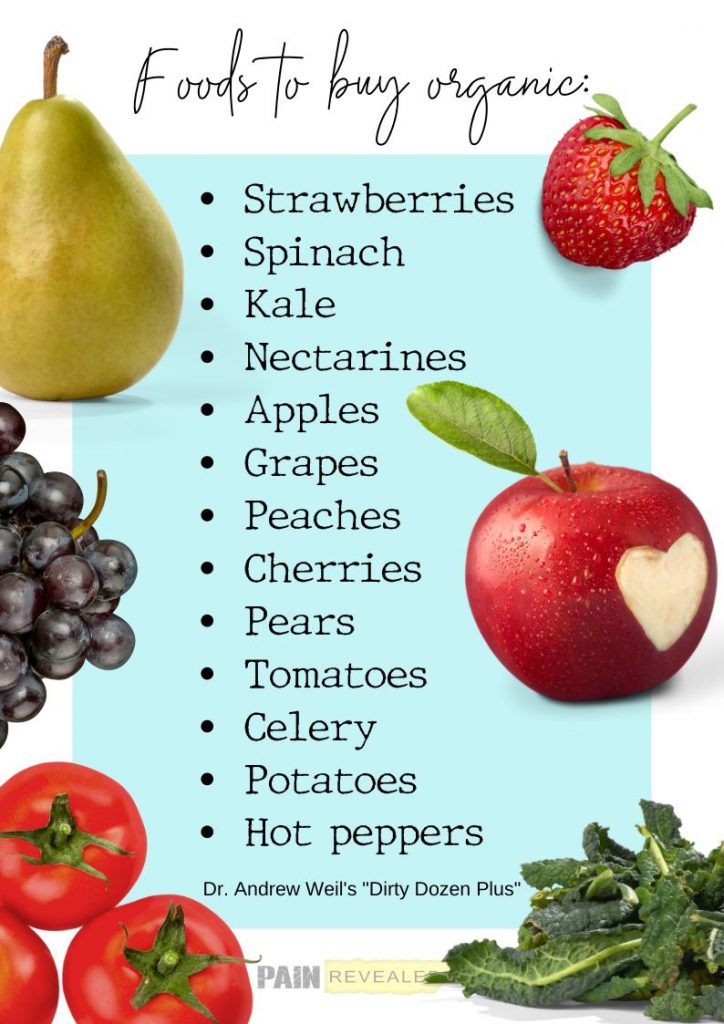This is part 1 of a 4 part series. [Part One] [Part Three]
In Part 1 of this series on the anti-inflammatory diet, we discussed the role of inflammation in pain, causes for inflammation, and began our look into the kinds of foods that can heal inflammation – what to eat and what to avoid.
Now let’s consider some of the nuts and bolts of an anti-inflammatory approach to the foods we eat. Looking at lists and menus can be overwhelming at first, and it may be easy to feel defeated before you even begin. Let’s talk about some tips to make this work for you:
Think of it as a lifestyle, not a diet
Have you ever told someone you were on a diet, and then felt like they were trying to sabotage you? They are seldom malicious about it, but will say… just this once… a little won’t hurt… it’s a special occasion…
How to tackle this? Don’t tell people you are on a diet—they may actually be more supportive if you say, “I feel better if I avoid _____.” Enlist their help!
An anti-inflammatory diet can be looked at as a lifestyle choice that pays a dividend that is far more satisfying than whatever food you may be trying to avoid.
Baby steps
You are probably going to sabotage yourself if you try to change everything at once. Your family may rebel or short-circuit your efforts.
What to do instead? Baby steps!

What if you only make one change per week to your diet? What if you focus on one key change and ease it into your lifestyle?
That may seem like a snail’s pace, but you are more likely to stick with it. Just think where you’ll be in a couple of months… or a year.
Additionally, it helps to focus on foods you can eat as opposed to obsessing about what you cannot. Always look to yes foods instead of ones you cannot have.
If you have a setback, give yourself a generous amount of grace and start over. We all slip, and it does not mean that you have failed. Promise that your next meal will be back on track, and keep moving forward!
Making the organic switch
Organic produce and grass-fed meats can take an anti-inflammatory diet to the next level by reducing exposure to chemicals and hormones. Buy organic if possible and to the extent to which it is within your budget.
Some look at organic produce and grass-fed meat as an up-front investment in health that will lead to savings on medical bills later.
The truth is that most of us have limited funds, but even this should not discourage us. If you can’t afford to go completely organic, just focus on the “dirty dozen”—the worst offenders in terms of pesticides and harmful chemicals.
Dr. Andrew Weil has compiled a helpful list he calls the “dirty dozen plus”1 that you should buy organic if possible:

If you absolutely can’t afford to buy organic, carefully wash and soak your produce. Several produce washes are commercially available that go a long way to clean your food and remove the harmful components.
Remember to check out food co-ops, farmer’s markets, and warehouse-type stores for surprisingly affordable organic options.
Increasing Veggies
Many beginners to an anti-inflammatory diet complain that they have never liked vegetables, and that making them a centerpiece of a new diet plan is daunting.
Here are a few tips that may help:
First, be patient with yourself—your taste buds will change. As you remove processed and chemical-laden foods and sugar from your diet, you will rediscover your palate and enjoy the foods that your body was meant to eat. It will get easier!
Experiment with recipes. Maybe you just didn’t like the way your mother boiled broccoli or Brussel sprouts, but roasting them with olive oil and sea salt could make them your new favorite thing!
If you like pickles, you will find that most any vegetable can be a yummy snack if pickled. Pickling is easy to do, recipes abound, and there are limitless tasty options.
The Pain Revealed anti-inflammatory diet (link) offers a long list of delicious veggie options – don’t miss out!
Other Helpful Suggestions
Jenna Fletcher of Medical News Today compiled this list of solid steps and helpful tips2 to transition to an anti-inflammatory lifestyle:

Empower yourself to gain control over inflammation by starting today. Baby steps lead to success much faster than giant leaps that aren’t sustainable. And it’s always important to remember that the choices you make today can have a profound positive impact on your health and wellbeing tomorrow.
Continue to part 3 of the series…
References:
- “Foods You Should Buy Organic: The Dirty Dozen Plus: Andrew Weil, M.D.” DrWeil.com, 22 Mar. 2019, https://www.drweil.com/diet-nutrition/anti-inflammatory-diet-pyramid/foods-you-should-always-buy-organic/.
- Fletcher, Jenna. “Anti-Inflammatory Diet: Food List and Tips.” Medical News Today, MediLexicon International, 3 Dec. 2017, https://www.medicalnewstoday.com/articles/320233.php.

